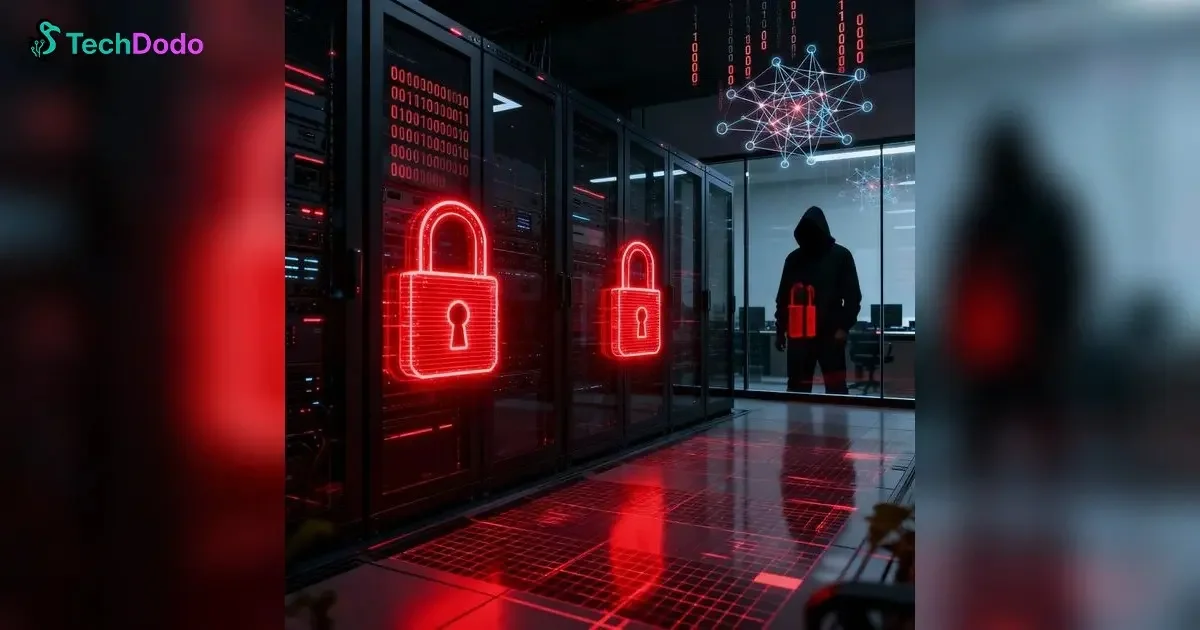Let's be honest, reading another article about cybersecurity is probably right up there with filing your taxes or calling customer service. It’s a chore. You know it’s important, but it’s also boring, complicated, and frankly, a bit of a downer.
But here’s the unpleasant truth we need to face: that chore is rapidly becoming a survival skill. And in India, we’re learning it the hard way.
Ransomware—the digital equivalent of someone kidnapping your entire business and demanding a massive payout—isn't just a problem anymore. It's a full-blown epidemic. And thanks to AI, the kidnappers are getting terrifyingly smart.
Forget the 24% increase you might have heard about. Let's talk specifics. According to the 2025 "State of Ransomware" report from Sophos, 53% of Indian organisations hit by ransomware in the last year paid the ransom.
Think about that. More than half.
This isn't some abstract problem happening in a server room in Ohio. This is happening right here.
💣 The "Pay Us or Else" Economy
We’re not talking about a few thousand rupees. The median ransom demand for Indian companies is now $961,289 (about ₹8 crore). And even if you don't pay, the average cost to just clean up the mess—the downtime, the specialists, the lost business—is $1.01 million (over ₹8.4 crore).
This is why companies like Motilal Oswal, Polycab, and Angel One have all found themselves in the crosshairs. It's why the average cost of a single data breach in India has hit ₹19.5 crore.
These aren't script kiddies in a basement anymore. These are sophisticated criminal enterprises. Groups with names like LockBit, RansomHub, and KillSec are running their operations like Fortune 500 companies, with a specific and "disproportionate focus" on Indian organisations.
They know our manufacturing, finance, and IT sectors are booming. And they know that boom has created a massive, juicy target.
🤖 How AI Turned a Nuisance into a Nightmare
So, why is this happening so fast? Why now?
In a word: AI.
It used to be that you could spot a phishing email from a mile away. The bad grammar, the weird "Dear Sir/Madam" greeting. It was almost charming.
Those days are over.
AI is now being used to supercharge every single step of a ransomware attack:
- Hyper-Realistic Phishing: Generative AI can write flawless, personalized emails in perfect corporate lingo. It can scrape LinkedIn to find out who your boss is, who you work with, and what projects you're on. The email you get won't just look legitimate; it will look like it was written specifically for you.
- Voice Cloning & Vishing: Hackers can now use AI to clone your CEO's voice from a 30-second clip of a YouTube interview. Imagine getting a call from your boss, in their actual voice, telling you to "urgently transfer funds" or "click this link." It's happening.
- Finding the Cracks... Instantly: Hackers are using AI to scan entire corporate networks in minutes, not days, looking for that one unpatched server or one weak password. The 2024 CERT-In report found that targeting these vulnerabilities is the number one way they get in.
- Ransomware-as-a-Service (RaaS): This is the real kicker. The big criminal gangs now lease their AI-powered attack tools to smaller criminals. This means any low-level crook can now deploy a hyper-sophisticated, AI-driven attack for a small subscription fee.
This isn't a "Terminator" future. This is right now. AI has automated the attack, removed the human error, and scaled it globally.
🛡️ You Can’t Be a Soft Target Anymore
Here's the part where I'm supposed to give you a long, boring list of "cyber-hygiene tips." I'll spare you. Instead, here’s the stuff that actually matters, especially in India.
The government, specifically CERT-In (the Indian Computer Emergency Response Team), knows how bad this is. They’ve stopped just "advising" and have started mandating.
The new 2025 rules are a wake-up call. If you run a business, this is no longer optional:
- The 6-Hour Rule: If you have any kind of data breach, you are now legally required to report it to CERT-In within six hours. Not six days. Six hours. This forces everyone to actually have a plan.
- Mandatory Audits: You are now required to conduct annual third-party cybersecurity audits. You can't just say you're secure; you have to prove it.
- Your Supplier is Your Problem: The new rules make you responsible for the security of your supply chain. That small-time vendor you use for billing? If they get hacked and it leads to you, you are on the hook.
For the rest of us, the non-negotiables are simple:
- Multi-Factor Authentication (MFA): Just use it. On everything. Your email, your bank, your social media. It is the single best thing you can do to stop an attacker who steals your password.
- Update Your S*: That "Update Required" notification on your phone or laptop? It's not a suggestion. It's often a patch for a critical security hole. The top root cause of attacks in India is exploiting old, unpatched software. Stop ignoring it.
- Assume Everyone is a Scammer: That's the sad reality. Get a weird text from a friend? A "critical" email from your bank? An urgent call from your boss? Stop. Verify. Call them back on a number you know is real. Be paranoid. It’s the only sane response.
Look, this stuff is scary. And it’s easy to feel hopeless. But the goal isn’t to be unhackable—that's impossible.
The goal is to not be the easiest target on the street.
The digital thieves are using AI to pick the locks on every door. It’s time we finally invested in a deadbolt.
